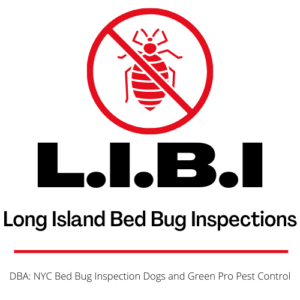Buying a new home should be an exciting experience. But it can also be stressful. You spend weeks searching for a house that’s just right, make your offer, and then wait for a response. If everything goes to plan your bid is accepted and you close the deal. The last thing you’re thinking about is bed bugs. But before you call in the movers and start packing up everything you own we should talk about how to protect your new home from a bed bug infestation.
Let’s Begin at the Beginning
Before you make any offers on a property you should do a little research to make sure the house you’re buying is free from bed bugs. The last thing you want to do is close on a bed bug infested property.
Start by researching the neighborhood. Does it have a history of bed bug infestations? Check local news outlets, online forums, and community websites for reports of bed bug activity. Having a better understanding of the local pest situation will help you to find a pest free home.
Inspecting the Property
After you’ve got some background information on the neighborhood it’s time to think about the house itself. Naturally, when considering the purchase of any property you’ll check out the house. But you’ll also want to inspect it for signs of bed bug activity. This is particularly important if the house you’re considering is furnished at the time of your walk through.
Sings of bed bug infestations include live bed bugs, shed exoskeletons, and small reddish-brown stains on furniture, mattresses, and baseboards. Pay special attention to areas where bed bugs are most likely to hide such as cracks and crevices.
Talk to Your Realtor
Finally, before you make an offer on any property talk to the seller or their real estate agent. Most states have disclosure laws that require sellers to notify potential buyers of a property’s bed bug history. If the seller or Realtor refuses to property disclose the property’s bed bug status that’s a red flag and it’s probably best to pass on the house.
It’s worth noting here that if the house you are considering has had a past bed bug infestation that doesn’t necessarily mean that you should pass on the property. However, you’ll want proof that the infestation was fully and professionally eliminated.
Moving into Your New Home
Once you’ve found your dream house and it’s passed inspection it’s time to start thinking about moving in. One of the most common ways bed bugs get into new homes is via the new homeowner. Like it or not sometimes we bring our own pests with us when we move into a new house.
Before moving anything inspect your belongings, especially furniture and clothing. Look for signs of bed bugs including reddish-brown fecal stains on fabric, exoskeletons, small white eggs and, of course, living bed bugs. If you find any evidence of bed bugs take immediate action. Treat any infested items and, if necessary, discard what can not be saved.
Finally, wash and dry all of your clothing and bedding at high temperatures before moving them into your new home. Heat is an effective method for killing bed bugs and their eggs. If there are any straggler bed bugs in your old home washing your clothes and bedding will reduce your risk of moving them into the new house.
Be Vigilant
As you settle in to your new home there are some simple tips you can follow to help minimize your bed bug risk.
-
Avoid Second-Hand Furniture – Buying second-hand is a good way to save money, but it’s also a good way to get bed bugs. If you do decide to buy second-hand make sure to carefully inspect all purchases before bringing them into your home.
-
Invest in Bed Bug Monitors – Bed bug monitors are an effective early detection tool. While these monitors won’t eliminate a growing infestation they can help to alert you the problem before it gets to far out of hand.
-
Maintain a Regular Cleaning Schedule – Cleanliness has nothing to do with bed bugs. However, a regular cleaning routine will make it easier to notice bed bug activity in your home. Vacuum at least once a week, paying close attention to the areas where bed bugs like to hide.
Remember. early detection is the key to preventing a small infestation from becoming a full scale nightmare. Be vigilant. Regularly inspect your home for signs of bed bug activity. Look for live bugs, shed skins, and fecal stains. If you discover signs of a growing infestation contact a professional inspection and removal service immediately.
Published by Scott Palatnik
If you believe you’ve brought bed bugs into your home or office give us a call. We can Help!
Now with 2 locations. On Long Island @516-619-6149 or in NYC @ 212-299-9186
We are Long Island Bedbug Inspections.
Your Bedbug Inspection and Elimination Solution.


